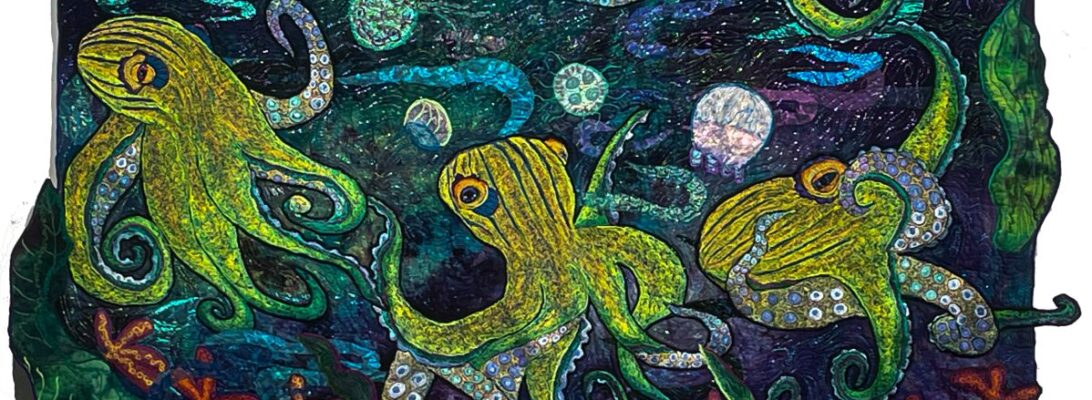
I’m about to get crafty on you. I usually don’t do a lot of Pinterest. But this is a Pinterest-inspired answer that I’ve been looking for for a while. I’ve been reworking my studio storage. Which is a nice way of saying I’ve been clearing out all the stuff cluttered in the corners.
I create heaps of scraps. Of all kinds of things. They silt up. some of those are cut shapes I use for design. I have collections of clouds, water ripples, leaves, suns, moons, and flower bits cut out of lace, cheesecloth, and sheers. If they’re in one place and I can find them, they help create the elementals in my backgrounds. If they’re not contained, they float across the studio floor under immovable objects. Sometimes never to be seen again. Sometmes found years after the project is finished.
Hence the cheese puff jars. Don has an addiction to cheese puff balls. I can’t eat them without setting off my celiac, but the containers are great. They’re small plastic barrels with a pop-on lid.
I’ve used these for years to store scraps. or to store threads, paints, dyed yarns, thread ends. Unfortunately, they tend to float back and forth over the floor. You can accidentally step in one, with predictable results. They’re somewhere between an answer and an accident waiting to happen.
I was trying to figure out how to make a storage container for them. I tried mesh shelving. Not quite the right size. I was considering making a shelf system out of PVC. Then I saw a Pinterest post of cans glued together as a pencil sorter.
Gluing bendy plastic bins sounded awful. Then I thought of elastic.


It sounds like you could just wrap elastic around them and pin them together. That was harder than it sounds. I used 1″ rolled elastic and #2 safety pins. I cut elastic the right length, and pinned them together. Then I pinned the elastics together with safety pins into a harness. I slipped the barrels into the harness. Two rows of elastic gave me more stability.

I’m pleased. I have a collection of fabric rocks all together where I can find them. And a water/cloud sun collection. I can put them right by my photo wall and design with them. And a station for 3 different kinds of scraps all in one place. Those have open lids so I can slide bits in as I cut things. I can either use them on their sides, or upend them. It’s all within reach.

I stacked mine in multiples of three. That makes a pyramid and it’s possible to move them as a unit. Groups of three are easier to move than groups of six. I wouldn’t try for groups of nine unless I didn’t plan to move them.
It remains to be seen, if groups of three can be stacked.
Haven’t tried working with them yet, but I’m excited. How long did it take to make the pyramids?
Some thoughts:
- Cleaning the jars is essential. they’re greasy. The new Dawn Power wash spray does a really good job.
- You could take off the labels, but that seemed like work.
- There might be something else out there that is sold in a barrel, that doesn’t leave as much residue, but I don’t know about it. Let me know if you find it.
































































